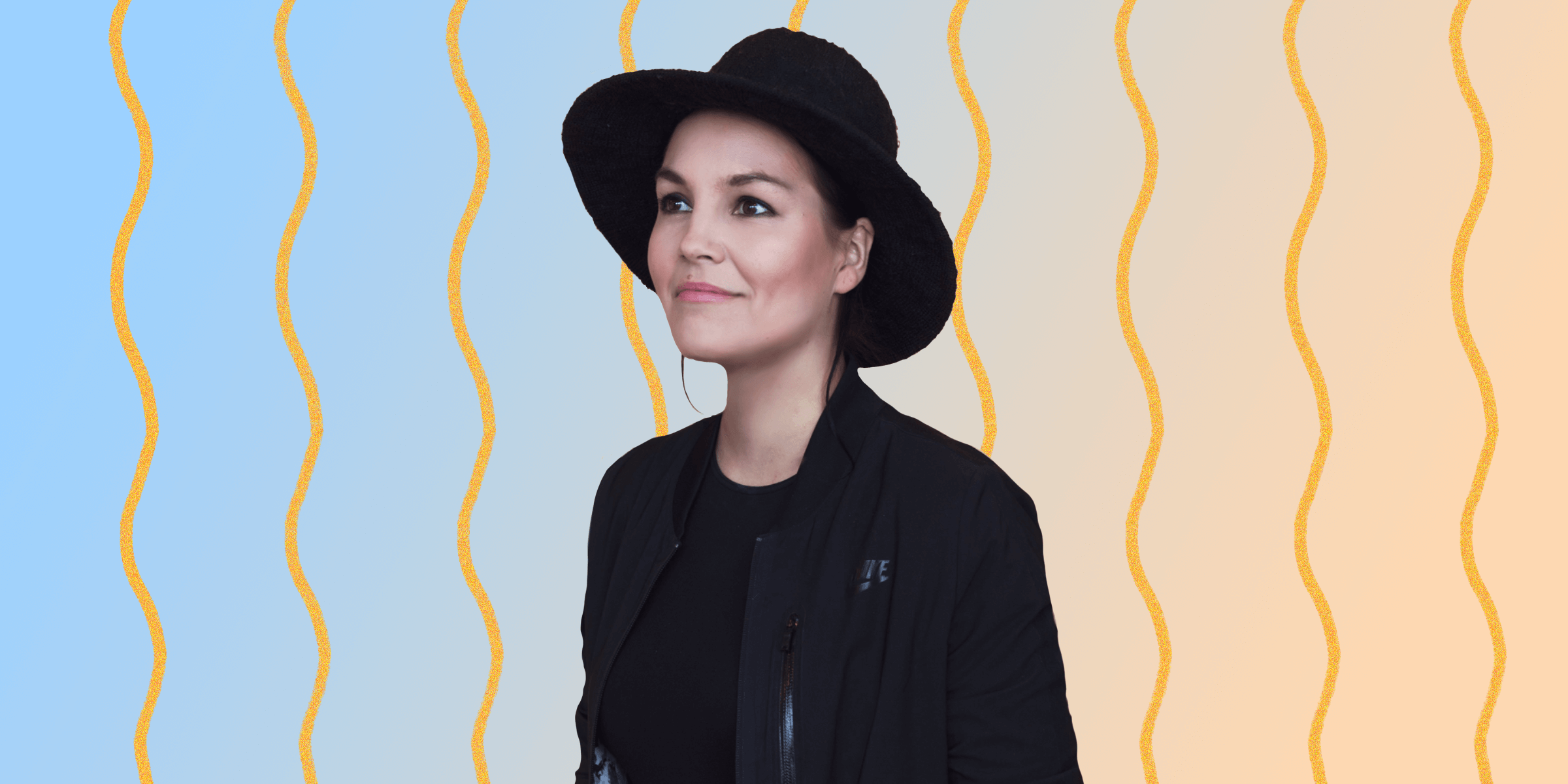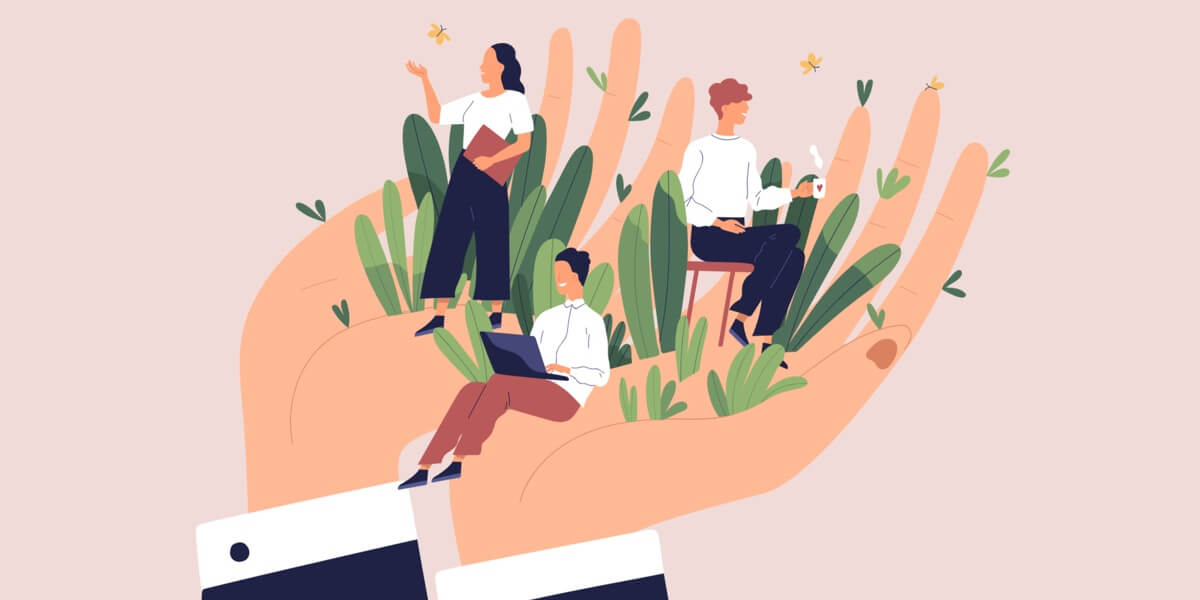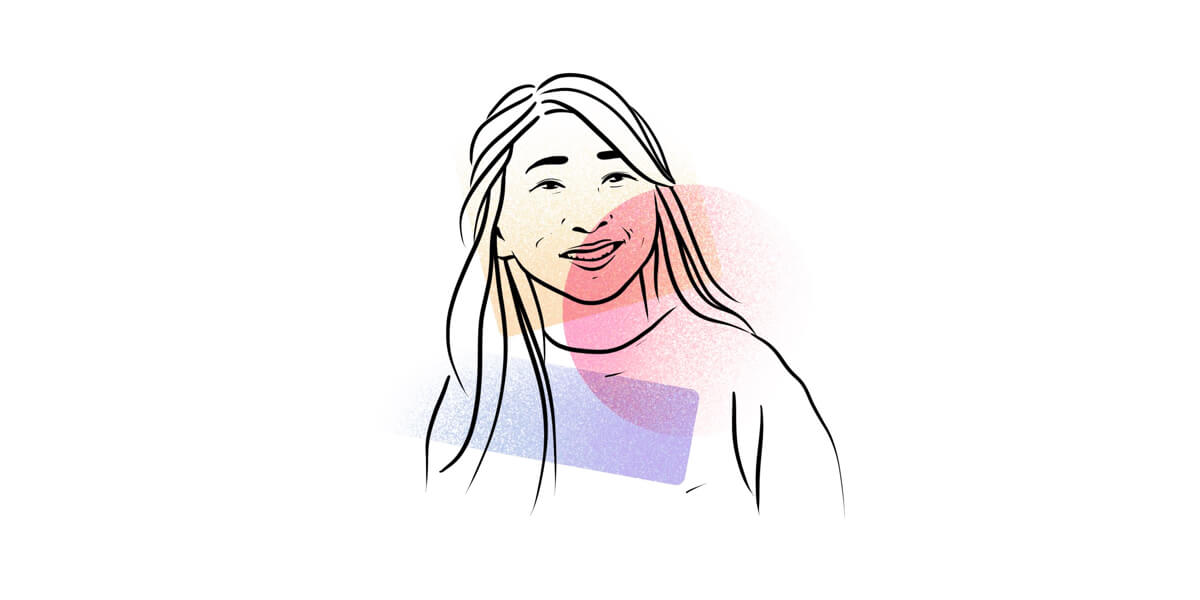The Path profiles people who are working in what we think of as "dream jobs," living their best professional lives, and looks at the people and practices that helped them along the way. We talk to these amazing folks about how goal setting, great managers, tough conversations, and key moments of praise helped set them straight or lifted them up at instrumental moments to get them to where they are now — running the show.
Since she was a child, Satu Pelkonen knew she wanted to be an artist. After beginning her creative career in her native Finland, Satu has gone on to work at a number of highly-regarded international creative agencies as a designer, art director, and creative director. But after spending years bringing creative projects to life for clients like Spotify, Google, and Twitter, Satu decided it was time to switch things up.
Satu now works as a Design Director at Squarespace. There, she leads the brand design team, ensuring that the brand’s mission and strategic goals are achieved in the strongest, most cohesive way. Satu sets the design direction across Squarespace’s channels through a variety of in-house projects — from websites and campaigns to content and experiential.
Here, Satu gets real about her professional story, what it feels like to transition from a maker to a manager, and why she believes it’s important for leaders to take chances on others.
What did you go to school for and what did you think you wanted to do at that time in your life?
Before I went to school I always hoped to be a painter or an illustrator but never really thought it was a realistic option even though my parents were very supportive in me choosing whatever career path I wanted. I ended up in this new university program that they were trying in Finland called Media Technology which basically combined engineering studies with design and arts.
Tell us about your career history so far.
My first real job was at a media publishing company called A-Lehdet in Finland as a Graphic Designer. It really helped shape my career and clarified to me that I wanted to be a designer. After my studies and working at A-Lehdet, I had a combination of design skills and understanding of technology and coding that helped me to get jobs in different digital and ad agencies, first as a graphic designer and later as an art director focusing on advertising campaigns and digital experiences.
By 2014 I had worked at a number of top agencies in Finland and figured working abroad would be a great next step to push myself out of my comfort zone. Living in New York was always a big dream of mine and in 2014 I was offered a job at Stink Studios as a Senior Art Director. So I packed my bags and moved across the ocean to work at one of the most awarded agencies in the United States.
At Stink, I got to really push my skills working with the most talented and amazing people — for clients like Spotify, Google, Facebook, Twitter, The Center, and YouTube. I learned a ton and was eventually promoted to Creative Director to lead the creative team in the New York office.
After almost five years at Stink and almost 10 years at creative agencies, I knew I wanted to try something different. I was really interested in seeing how in-house agencies and creative teams did things. I had some friends and old colleagues who had moved to Squarespace and heard great things about the internal creative team. As a stroke of luck, when I started looking for new opportunities, Squarespace was also looking for a Design Manager for the Brand Creative team. It all seemed to be written in the stars.
Tell me about someone who’s made a significant impact on your career trajectory—whether that’s a mentor, a manager, or someone else crucial to your success.
I’m lucky to have had great managers and mentors who believed in me throughout my career. But my first boss at my first job was an amazing example of a badass woman in a leadership position. She was a huge inspiration and had this amazing way of making you feel like you can do anything you set your mind to. If she hadn’t given me my first job and written me a letter of recommendation when I decided to move to New York I don’t think I’d be where I am today. She laid the foundation of self-belief early on in my career that to this day I thank her for.
What do you love most about your job? The least?
My absolute favorite thing is how every project is different. Not a lot of people know that we do all the creative and design work in-house and it’s really awesome to get to work on everything—from award-winning TV spots to designing cool swag for the employees or working on projects like our Stand Proud pride activation where you get to give back to the community and work on something that’s important to you.
My least favorite part is definitely meetings (haha). It’s a necessary evil when you move higher up on the leadership ladder, but I’m a maker at heart so on days when there are back-to-back meetings all day long I feel like I haven’t been creative enough!
Has there been a time when someone took a chance on you? What happened? Do you think it’s important to take chances on others?
I’ve been lucky in my career in the sense that I’ve had amazing bosses who have believed in me, taken a chance on me, and promoted me when I’ve asked for it. I absolutely think it’s important to take chances on others because that’s how you grow!
Women often tend to sell themselves short and ask for promotions or apply for jobs only when they feel like they fill 100% of the requirements where men will do it if they fill 30% of the requirements. I want to encourage women to move away from that mindset and be more bold, even if it feels intimidating. My first boss always said “just apply for the job, you can learn how to do it later,” and I’ve been trying to remember that throughout my career. After all, most growth comes when you push yourself out of your comfort zone.
How do you integrate critical feedback and praise into your work?
Giving critical, constructive feedback is one of the hardest parts of being a manager. It’s something I’m still working on getting better at. One thing I always appreciated as a young designer was when feedback was clear and specific. I try to do that for my designers as well while also not telling them exactly what to do so they can still come to the solution on their own.
I also try to ask a lot of questions when doing reviews so that I can better understand where they’re coming from. It also helps the creatives to see the possible holes in their work themselves without me pointing them out and the feedback becomes more of a dialogue rather than a one-sided critique.
Praise is also important so that people feel appreciated and seen especially when working in the creative field. I’ve made a habit of remembering to thank my team for all the hard work they’ve done in design reviews that way we can leave on a positive note, no matter the outcome of the meeting.
Tell us about your first experience as a manager. What have you learned since then?
My first step into being a manager came after I was promoted to a Creative Director role after years of being a Designer and Art Director. I didn’t know what I was getting myself into, in all honesty. I had a hard time taking a step back and delegating the work to my team because I was used to doing it myself.
After having been a manager for a while, I’ve understood the value of soft skills like listening, communication, delegation, and leadership. Luckily, at my current job employees have great resources that we can take advantage of and I’ve been taking manager training courses to develop some of these skills more.
What’s been the biggest learning lesson in your career so far?
Going from a maker (designer/art director) to a coach (manager/director) has been the biggest learning moment in my career. I’ve always loved doing design work and helping build something with my own hands. But when I switched over to a director role I realized that it’s not about me creating beautiful designs or getting my hands dirty as much anymore — even though all creative directors should still be able to. It’s more about taking a step back, helping bring the work to a higher level, removing blocks, and pushing my team to do the best possible work.
What do you think makes a good leader?
I think a good leader is someone who is passionate about their work and trusts their team. They’re able to give good, constructive feedback but at the same time not be a dictator. You have to be able to create an inspiring environment where people feel they can do their best work but also feel safe and appreciated.
How do you approach difficult conversations with your team and other colleagues?
I think everyone would agree that difficult conversations are the least fun part of being a manager. I always approach it with compassion and plan out the conversation beforehand as it’s not something I want to just “wing” in the moment.
I try to be honest and very clear why we’re having this conversation so that everyone is on the same page. Coming into these situations with an open mind and an interest in solving the problem together has always been a very helpful way to approach these conversations.
Has goal-setting played into your career?
When I was younger I always had a dream of being a Creative Director at Vogue. I thought it was the coolest job there ever was. It was that same goal that made me move to New York from Finland five years ago and I don’t think I’d be here if I didn’t have those dreams and goals for myself. Of course, those goals and dreams may evolve as you grow older and move forward in your career but having them has really helped me push myself and get to where I wanted.
What do you think managers and leaders need to be doing to create better workplaces?
I think we as managers need to help create safe and supportive work environments where success is celebrated and self-expression is valued. When people feel comfortable being themselves and are in a place where they can safely take calculated risks, the work output usually gets better and more creative. Another important thing is fostering a culture of open communication and collaboration that helps create a sense of community.
What advice would you give to your younger self?
It’s not as scary as you think; be brave and take risks.




.jpg)


